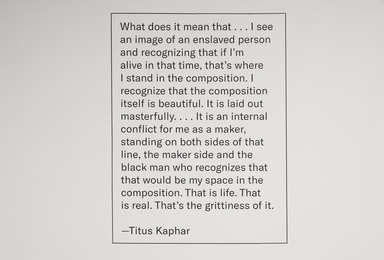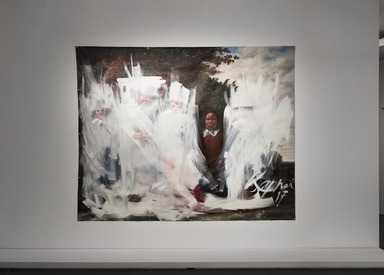

One: Titus Kaphar, Friday, June 21, 2019 through Sunday, October 13, 2019 (Image: DIG_E_2019_One_Titus_Kaphar_01_PS11.jpg Brooklyn Museum. (Photo: Jonathan Dorado) photograph, 2019)
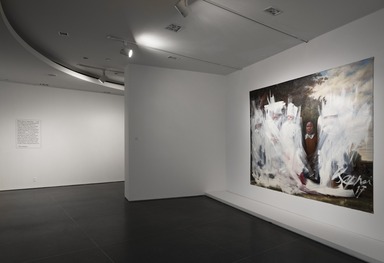
One: Titus Kaphar, Friday, June 21, 2019 through Sunday, October 13, 2019 (Image: DIG_E_2019_One_Titus_Kaphar_02_PS11.jpg Brooklyn Museum. (Photo: Jonathan Dorado) photograph, 2019)
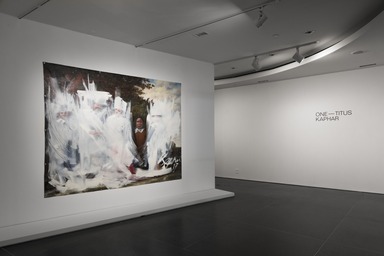
One: Titus Kaphar, Friday, June 21, 2019 through Sunday, October 13, 2019 (Image: DIG_E_2019_One_Titus_Kaphar_03_PS11.jpg Brooklyn Museum. (Photo: Jonathan Dorado) photograph, 2019)
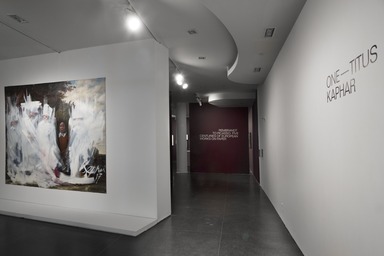
One: Titus Kaphar, Friday, June 21, 2019 through Sunday, October 13, 2019 (Image: DIG_E_2019_One_Titus_Kaphar_04_PS11.jpg Brooklyn Museum. (Photo: Jonathan Dorado) photograph, 2019)

One: Titus Kaphar, Friday, June 21, 2019 through Sunday, October 13, 2019 (Image: DIG_E_2019_One_Titus_Kaphar_05_PS11.jpg Brooklyn Museum. (Photo: Jonathan Dorado) photograph, 2019)
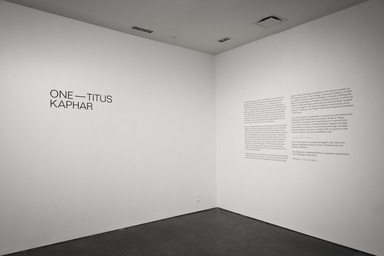
One: Titus Kaphar, Friday, June 21, 2019 through Sunday, October 13, 2019 (Image: DIG_E_2019_One_Titus_Kaphar_06_PS11.jpg Brooklyn Museum. (Photo: Jonathan Dorado) photograph, 2019)

One: Titus Kaphar, Friday, June 21, 2019 through Sunday, October 13, 2019 (Image: DIG_E_2019_One_Titus_Kaphar_07_PS11.jpg Brooklyn Museum. (Photo: Jonathan Dorado) photograph, 2019)
One: Titus Kaphar
-
One: Titus Kaphar
During the dramatic finale of his TED Talk, “Can Art Amend History?,” in April 2017, Titus Kaphar whitewashed his own painting—based on Family Group in a Landscape, by the renowned seventeenth-century Dutch portrait painter Frans Hals—to create Shifting the Gaze. Both Kaphar’s TED Talk and Shifting the Gaze make a compelling case for the need to tell the histories of groups who have been deliberately excluded from the official record. Kaphar points to the dominance of a European bias through which histories, including art history, have been written, and advocates for expanding them to put forward more honest and inclusive narratives.
By obscuring significant parts of the group portrait with broad strokes of white paint, Kaphar drew attention to an individual whose race and class historically would have placed him at the margins of seventeenth-century European society. Through veils of white pigment, we discern traces of family members: the white European head of the household, flanked by his son and wife, with his daughter off to the side. Kaphar’s painting highlights the black boy, likely the family servant, situated between the two female figures. In Hals’s painting, this boy melds into the background foliage, but here, his carefully rendered and illuminated face, set off by a broad white collar, is the center of attention.
Kaphar takes care to note that he is not permanently erasing or eradicating figures: the linseed oil mixed into the lead white oil paint he used will become increasingly transparent as it ages and will allow the faces and bodies of the family members to reemerge over time. This strategy invites us to refocus, to shift our gazes to what we have overlooked in the past. Shifting the Gaze is representative of Kaphar’s artistic practice, in which he seeks to make paintings and sculptures that honestly “wrestle with the struggle of the past but speak to the diversity of our present,” allowing us to imagine alternative historical narratives in the future.
One: Titus Kaphar is presented in conjunction with Rembrandt to Picasso: Five Centuries of European Works on Paper, a selection of artworks from the Museum’s collection that is on view on this floor. In that exhibition Kaphar provides commentary on some of the prints and drawings included, offering insights into how we might shift our gazes to view familiar works in new and unexpected ways.
One: Titus Kaphar is curated by Eugenie Tsai, John and Barbara Vogelstein Senior Curator, Contemporary Art, Brooklyn Museum.
One Brooklyn is made possible by a generous contribution from JPMorgan Chase & Co. -
About Titus Kaphar
Titus Kaphar was born in Kalamazoo Michigan, and grew up there and in San Jose, California. He received a B.F.A. from San Jose State University in 2001 and an M.F.A. from Yale School of Art in 2006. In addition to his studio practice, Kaphar is currently engaged in launching NXTHVN (Next Haven), a nonprofit arts incubator in New Haven, Connecticut, where he now lives. He founded NXTHVN in 2015 with Jonathan Brand and Jason Price in Dixwell, a historically black neighborhood, to “cultivate a sustainable creative community that attracts and supports talent within and beyond New Haven.” Housed in former factory buildings, NXTHVN offers studios, work spaces, residencies, fellowships, a gallery, and professional training, as well as opportunities for local high school and college students and artists from around the world.
Kaphar’s strategy of partially obscuring his portraits dates back to his series The Jerome Project, consisting of portraits of black men rendered on the gold grounds of shaped panels. Resembling Byzantine icons of saints, including Saint Jerome, the portraits are based on mug shots that the artist discovered online while researching his estranged father’s prison records. All show incarcerated men who share Kaphar’s father’s name, Jerome. Each completed portrait is partially submerged in tar, obscuring parts of the faces and affording the subjects a degree of privacy they lost when their mug shots became part of the public record. The Brooklyn Museum’s The Jerome Project (My Loss), 2014, is one of the largest works in the series and takes the form of a diptych, or two paired panels.
The Jerome Project was followed by the whitewash paintings, including Shifting the Gaze. Time magazine commissioned Kaphar to make a painting for one of its 2014 “Person of the Year” finalists, the protesters in Ferguson, Missouri, who mobilized after the fatal police shooting of black teenager Michael Brown. The work, Yet Another Fight for Remembrance, depicts protesters with their hands raised and their faces and bodies obliterated by broad strokes of white paint. In 2019 Kaphar employed a similar visual strategy in Redaction, a portfolio of prints combining his portraits of incarcerated individuals with poetry by Reginald Dwayne Betts, a poet, lawyer, prison reform activist, and former convict. The verses, made from documents filed by the Civil Rights Corp on behalf of people incarcerated for their inability to pay court fines and fees, use the legal strategy of redaction, or expunging selected text.
-
May 16, 2019
Titus Kaphar’s Shifting the Gaze reimagines a seventeenth-century Dutch painting to question dominant historical narratives in Western art
Titus Kaphar is a contemporary American painter whose work recasts and reimagines the individuals who have often been marginalized or left out of traditional Western art. As the focus of the exhibition One: Titus Kaphar, the Brooklyn Museum presents the artist’s monumental painting, Shifting the Gaze (2017), a work based on a seventeenth-century Dutch portrait of a prosperous white European family, which Kaphar strategically painted over during a 2017 TED Talk, leaving visible a Black boy believed to be the family’s servant. With his conscious refocusing of the viewer’s gaze to the boy, Kaphar draws attention to groups who have been excluded from art-historical narratives and points to the need to amend these histories so they are more honest and inclusive. The exhibition is part of the Brooklyn Museum’s continuing effort to present exhibitions that take a critical look at the art historical canon, questioning the Eurocentric viewpoint from which art history has traditionally been explored and centering new perspectives. The exhibition is curated by Eugenie Tsai, John and Barbara Vogelstein Senior Curator of Contemporary Art, Brooklyn Museum. It is part of the One Brooklyn series, in which each exhibition focuses on an individual work from the Brooklyn Museum’s encyclopedic collection, revealing the many stories woven into a single work of art.
Titus Kaphar (b. 1976) is best known for his body of work that responds to pressing social issues at the intersection of racial justice, activism, and representation. Kaphar’s paintings often borrow from classical Western art and seek to forefront suppressed histories and connect them to contemporary concerns. The work on view in One: Titus Kaphar was completed on stage as a dramatic conclusion to his TED Talk in April 2017, “Can Art Amend History?,” which explored how the encoded language of art conveys the power and privilege of its subjects. He presented to the audience his own painting, based on the seventeenth-century Dutch painting Family Group in a Landscape (circa 1645–48), by Frans Hals, which depicts a European couple, their two children, and an African servant, all posed against a landscape. After asking the audience what they see in the painting, Kaphar describes the power relations inherent in the image—from the compositional hierarchy that puts the white figures in the foreground to the detailed depiction of the silk and lace dresses the wife and daughter are wearing. During the talk, Kaphar uses white pigment mixed with linseed oil to veil the figures of the couple and children with broad brushstrokes—shifting the audience’s attention to the figure of the Black boy. Framed by a wide collar and Kaphar’s whitewashed brushstrokes, the boy’s face is suddenly illuminated, no longer blending into the landscape behind him.
Kaphar notes that he doesn’t seek to permanently erase the other figures; the linseed oil mixed into the paint will allow the faces and bodies of the family members to reemerge over time. “We can’t erase this history, it’s real. We have to know it,” he explains. Instead, he momentarily refocuses our gaze on what we haven’t seen in the past, thereby encouraging a more truthful understanding of the present. Kaphar’s 2017 TED Talk will be on view as part of the presentation.
One: Titus Kaphar will be presented in conjunction with Rembrandt to Picasso: Five Centuries of European Works on Paper, an exhibition of more than 120 works on paper from the Brooklyn Museum’s collection, featuring such masters as Albrecht Dürer, Paul Gauguin, Francisco Goya, Vincent van Gogh, Berthe Morisot, Pablo Picasso, and Rembrandt van Rijn. Commentary by Kaphar, which is drawn from conversations he had with the curators of both exhibitions, will accompany a select number of prints and drawings in Rembrandt to Picasso, shining a light on the often incomplete historical narrative presented by the predominantly white, male artists of the traditional Western canon. Kaphar’s words help shift our gaze, posing questions about familiar works and providing a context for viewing them in new, unexpected ways.
“Titus Kaphar’s work encourages us to think about who has been empowered to write the dominant narratives throughout history. It also pushes us to think about who has traditionally been excluded from these histories,” said Eugenie Tsai. “Shifting the Gaze is a welcome addition to the Museum’s collection, as it reminds us to widen the lens we use to look at art-historical masterworks already in the collection.”
One Brooklyn is made possible by a generous contribution from JPMorgan Chase & Co.
One: Titus Kaphar
View Original
